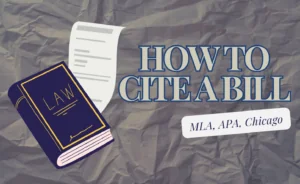APA Style is a widely accepted editorial standard used in the social sciences and many other academic disciplines. It encompasses rules for paper format, citation, and references to ensure clarity, uniformity, and a scholarly look to academic work. However, sources like websites, government reports, and others might not always provide complete information, such as the author’s name. This article discusses the approach recommended by APA for citing such sources, ensuring your work remains credible and ethically sound.

✅ AI Essay Writer ✅ AI Detector ✅ Plagchecker ✅ Paraphraser
✅ Summarizer ✅ Citation Generator
What is the Impact of Missing Information?
In academic and professional writing, adhering to APA style guidelines is crucial for maintaining the credibility and integrity of scholarly work. However, one may often encounter sources that lack essential information, such as the author’s name, publication date, or even the title. This absence of information presents unique challenges in citation and referencing, impacting the reader’s ability to trace the source material. The first step in handling this circumstance is understanding the implications of missing information and the strategies APA style offers to address these gaps.
Missing information in citations can complicate the research process for readers, potentially affecting the perceived reliability and rigor of your work. Citations serve as a roadmap, guiding readers to the original source of information, allowing them to verify content, delve deeper into the topic, or explore related research. You can always use a citation generator just to be sure.
How To Cite in APA With No Author
In instances where a source lacks an author, APA style guidelines dictate alternative approaches to ensure proper citation. Typically, the title of the work moves to the author’s position in your reference entry. For webpage citations or when citing online sources where the author is unknown, the article or page title takes precedence, followed by the date of publication and the website name. This method applies across various types of sources, including how to cite government websites or digital platforms with no clear authorship. Utilizing citation tools can simplify this process, providing structured examples and helping maintain the consistency and accuracy of your citations.
Below, we explore how to handle citations for different sources that lack an author, ranging from webpages and government reports to social media posts and more, reinforcing the adaptability of APA style to diverse information landscapes.
Webpage Citations
When citing a webpage without an author, the title of the article or page becomes the first component of the citation. Following this, the publication date is listed (if available), along with the website name and URL. For example:

If you’re citing a webpage with no author or date:

Government Reports
Government documents often lack a personal author but have a department or agency listed as the corporate author. In cases where no individual or corporate author is identifiable, the report title moves to the author position, followed by the publication year and details of the publishing agency:

Social Media Posts
For social media postings without a clear individual author, use the username or platform’s name in place of the author’s name and the date of the post followed by the content’s title or a description of the post in square brackets:

In this citation, “naturelover2024” is the username of the individual or organization that posted the content on Instagram. The year “2024,” followed by the exact date “March 3,” specifies when the post was published.
The description within the square brackets provides a brief overview of the post’s content, which in this case is a “Photo of a breathtaking sunrise over the Grand Canyon.” This description is necessary because social media posts can be non-textual (e.g., images or videos), and APA style requires a content description for such posts. Lastly, the direct URL to the post is included, allowing readers to access the original content. This example demonstrates how to adapt APA citation guidelines for social media content, ensuring that such sources are accurately and responsibly cited in academic and professional works.
Books and Ebooks
In the case of books or ebooks without an identifiable author, the title takes the lead in your citation, followed by the publication year, publisher’s name, and the DOI or URL (if applicable):

In this citation, “Exploring Ancient Civilizations” is the title of the book, which is italicized to emphasize it as a standalone work. The publication year is “2021,” followed by the name of the publisher, “Global History Press.” Lastly, the digital object identifier (DOI) is provided as a unique alphanumeric string that directs readers to the location of the book online. DOIs are preferred in academic citations because they offer a stable link to digital content. However, if a DOI is not available, a URL could be used instead to direct readers to where the book can be accessed or purchased online. This example showcases the structure for citing a book without an author in APA style, ensuring the citation is complete and allows readers to find the source material.
The Role of Dates and Titles in Citations with Missing Authors
The publication date plays a pivotal role in citations, especially when the author’s information is missing. If the date is also unavailable, APA style recommends using “n.d.” (no date) to signify this absence. This component, coupled with a descriptive title, aids readers in locating the source material. The integration of these elements adheres to the basic webpage citation format and APA reference entry standards, ensuring that even in the absence of an author, the source remains identifiable and retrievable. Resources like citation examples and the knowledge base on APA’s official website offer a wealth of information to navigate these nuances effectively.
FAQ
Follow us on Reddit for more insights and updates.





Comments (0)
Welcome to A*Help comments!
We’re all about debate and discussion at A*Help.
We value the diverse opinions of users, so you may find points of view that you don’t agree with. And that’s cool. However, there are certain things we’re not OK with: attempts to manipulate our data in any way, for example, or the posting of discriminative, offensive, hateful, or disparaging material.